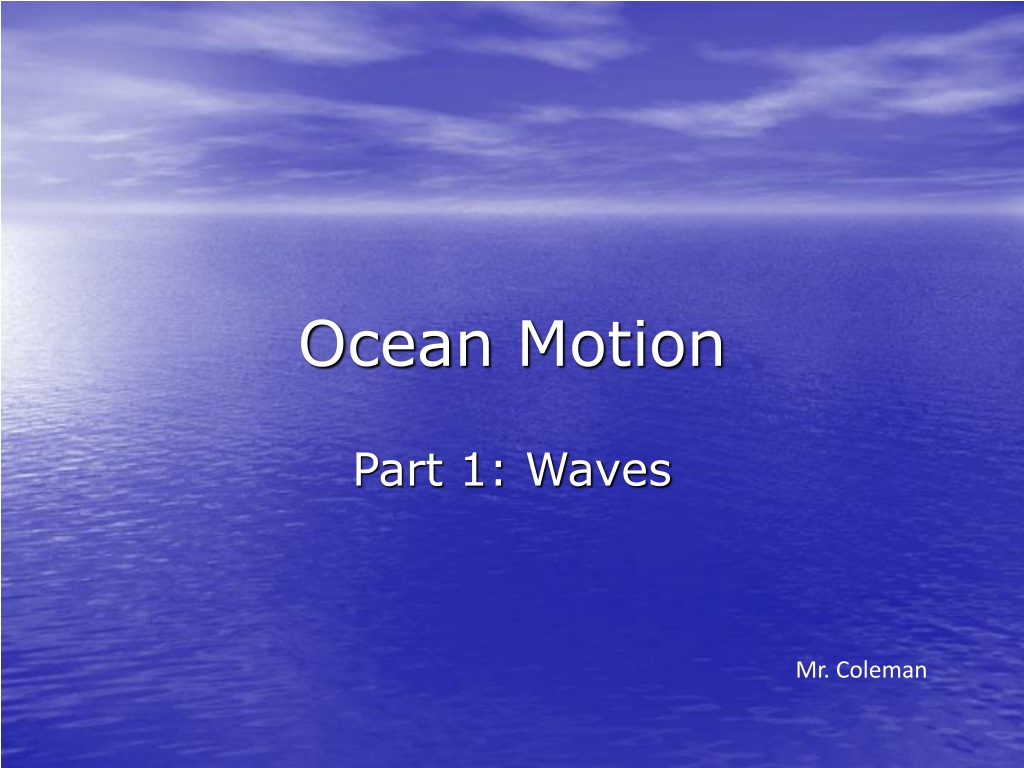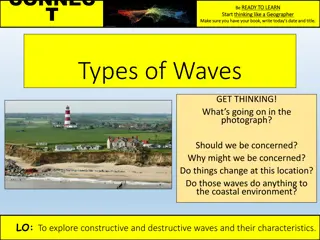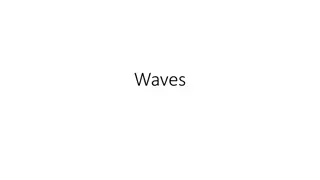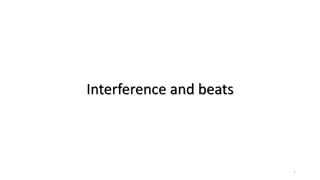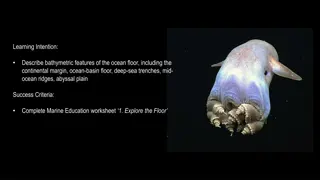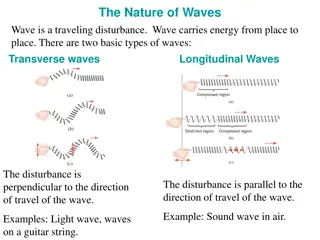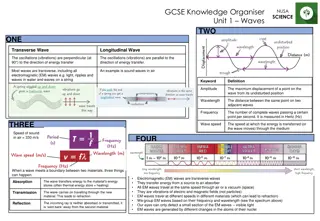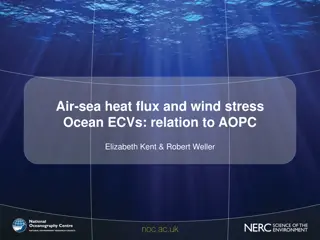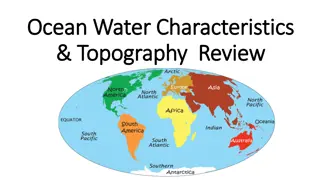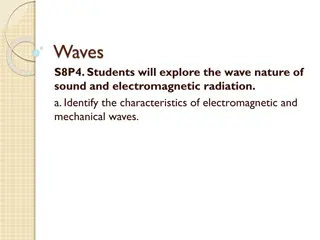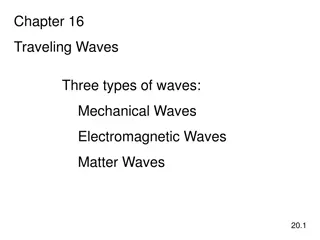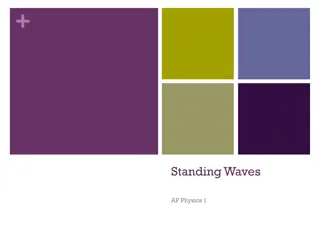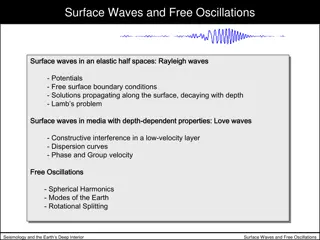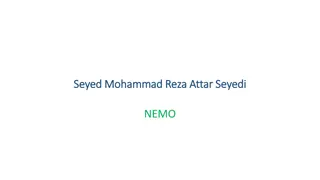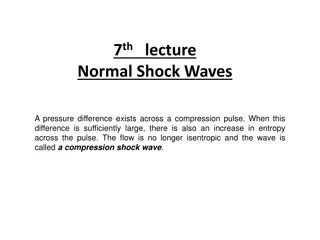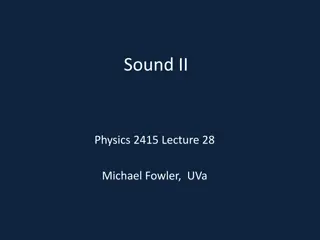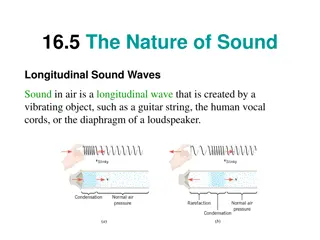Understanding Ocean Waves and Their Dynamics
Exploring the science behind ocean waves, this resource delves into why waves occur, the components of a wave, how water moves within a wave, and the effects of waves hitting a beach. From defining waves to discussing wave characteristics, this content provides valuable insights into the fascinating world of wave motion in the ocean.
Download Presentation

Please find below an Image/Link to download the presentation.
The content on the website is provided AS IS for your information and personal use only. It may not be sold, licensed, or shared on other websites without obtaining consent from the author. Download presentation by click this link. If you encounter any issues during the download, it is possible that the publisher has removed the file from their server.
E N D
Presentation Transcript
Ocean Motion Part 1: Waves Mr. Coleman
? Why does the Ocean have waves? What are the parts of a wave? How does water move in a wave? What happens when a wave hits a beach?
Define wave: Wave a rhythmic movement that carries energy through matter or space. in the ocean, waves move through seawater.
Parts of a wave Wave height Wavelength Crest Crest Trough
Parts of a wave: Crest the highest part of a wave. Trough the lowest part of a wave. Wavelength the distance between two adjacent crests. Wave height the vertical distance between the lowest part and the highest part.
More wave words Frequency the number of complete waves (or oscillations) that occur over a given period of time. Usually measured in cycles per But Mr. Coleman, why do we have to learn vocabulary words that aren t in the book? second. For the FCAT! Amplitude half the wave height
Most waves caused by wind Friction from the wind moving over the water causes the water to move along with the wind. If the wind speed is high enough, the water begins to pile up and a wave is formed.
How does water move in a wave? Some clues: When you were at the beach, you probably noticed that the edge of the water goes back and forth with the waves. If you float an object on the ocean, it stays roughly in one place. It is not pushed forward by the waves.
How water moves in a wave: Particles of water move around in circles. The farther below the surface, the smaller the circle. At a depth about equal to half the wavelength, the motion stops.
At the beach: Wavelength decrease and wave height increases as waves approach the shore. Constant Waves drag against the bottom Wavelength and wave length decreases
At the beach, part 2 As the wave slows, its crest and trough come closer together. The top of the wave is not slowed by friction and moves faster than the bottom.
Now we wave goodbye to this part of the lesson, for now.
This powerpoint was kindly donated to www.worldofteaching.com http://www.worldofteaching.com is home to over a thousand powerpoints submitted by teachers. This is a completely free site and requires no registration. Please visit and I hope it will help in your teaching.
